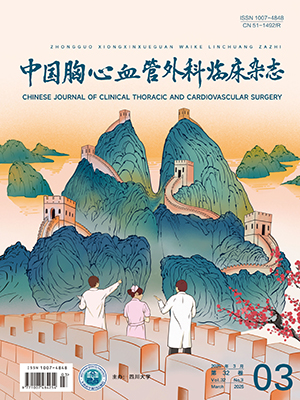| 1. |
van der Laan ME, Schat TE, Olthuis AJ, et al. The association between multisite near-infrared spectroscopy and routine hemodynamic measurements in relation to short-term outcome in preterms with clinical sepsis. Neonatology, 2015, 108(4): 297-304.
|
| 2. |
Tume LN, Arnold P. Near-infrared spectroscopy after high-risk congenital heart surgery in the paediatric intensive care unit. Cardiol Young, 2015, 25(3): 459-467.
|
| 3. |
Vida VL, Tessari C, Cristante A, et al. The role of regional oxygen saturation using near-infrared spectroscopy and blood lactate levels as early predictors of outcome after pediatric cardiac surgery. Can J Cardiol, 2016, 32(8): 970-977.
|
| 4. |
Wolf AR. Through the glass darkly: searching for safety signals in physiological monitoring. Paediatr Anaesth, 2015, 25(1): 107-110.
|
| 5. |
Ikeda K, MacLeod DB, Grocott HP, et al. The accuracy of a near-infrared spectroscopy cerebral oximetry device and its potential value for estimating jugular venous oxygen saturation. Anesth Analg, 2014, 119(6): 1381-1392.
|
| 6. |
Kopp R, Dommann K, Rossaint R, et al. Tissue oxygen saturation as an early indicator of delayed lactate clearance after cardiac surgery: a prospective observational study. BMC Anesthesiol, 2015, 15: 158.
|
| 7. |
Sood BG, McLaughlin K, Cortez J. Near-infrared spectroscopy: applications in neonates. Semin Fetal Neonatal Med, 2015, 20(3): 164-172.
|
| 8. |
Huang J, Zhou Y, Zhu D. Systemic haemodynamics and regional tissue oxygen saturation after bidirectional cavopulmonary shunt: positive pressure ventilation versus spontaneous breathing. Interact Cardiovasc Thorac Surg, 2016, 23(2): 235-239.
|
| 9. |
Hoskote AU, Tume LN, Trieschmann U, et al. A cross-sectional survey of near-infrared spectroscopy use in pediatric cardiac ICUs in the United Kingdom, Ireland, Italy, and Germany. Pediatr Crit Care Med, 2016, 17(1): 36-44.
|
| 10. |
Tanidir IC, Ozturk E, Ozyilmaz I, et al. Near infrared spectroscopy monitoring in the pediatric cardiac catheterization laboratory. Artif Organs, 2014, 38(10): 838-844.
|
| 11. |
Séguéla PE, Guillet E, Thambo JB, et al. Ductal closure and near-infrared spectroscopy for regional oxygenation monitoring in ductus-dependent congenital heart disease. Arch Pediatr, 2015, 22(8): 857-860.
|
| 12. |
Ghanayem NS, Hoffman GM. Near infrared spectroscopy as a hemodynamic monitor in critical illness. Pediatr Crit Care Med, 2016, 17(8 Suppl 1): S201-S206.
|
| 13. |
Bailey SM, Mally PV. Review of splanchnic oximetry in clinical medicine. J Biomed Opt, 2016, 21(9): 091306.
|
| 14. |
Denault A, Lamarche Y, Rochon A, et al. Innovative approaches in the perioperative care of the cardiac surgical patient in the operating room and intensive care unit. Can J Cardiol, 2014, 30(12 Suppl): S459-S477.
|
| 15. |
Kim JW, Shin WJ, Park I, et al. Splanchnic oxygen saturation immediately after weaning from cardiopulmonary bypass can predict early postoperative outcomes in children undergoing congenital heart surgery. Pediatr Cardiol, 2014, 35(4): 587-595.
|
| 16. |
Foster CB, Spaeder MC, McCarter RJ, et al. The use of near-infrared spectroscopy during an extubation readiness trial as a predictor of extubation outcome. Pediatr Crit Care Med, 2013, 14(6): 587-592.
|
| 17. |
Cruz SM, Akinkuotu AC, Rusin CG, et al. A novel multimodal computational system using near-infrared spectroscopy to monitor cerebral oxygenation during assisted ventilation in CDH patients. J Pediatr Surg, 2016, 51(1): 38-43.
|




